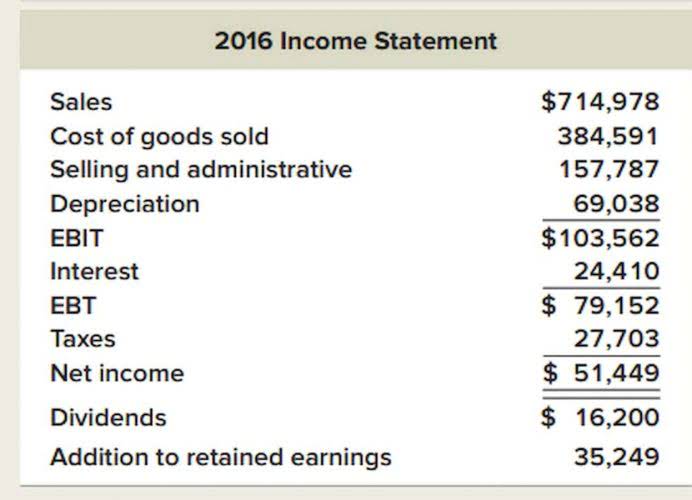
Multiplying the total overhead rate by the number of direct labor hours needed for production provides the standard orapplied overhead costs. The master budget has two major parts including the operating https://www.bookstime.com/articles/contra-expense budget and the financial budget (See Exhibit 9-4). The operatingbudget begins with the sales budget and ends with the budgeted income statement.

Cash Budget
Since the difference is caused by the way fixed overhead costs are treated, it can be illustrated by comparing standardfixed overhead costs with budgeted fixed overhead costs. Figure 9-1 shows that if planned or budgeted hours (BH1) are less than denominator hours (DH), theplanned production volume variance (PPVV) is unfavorable and represents underapplied fixed overhead. However, if planned or budgeted hours (BH2) aregreater than denominator hours (DH), then the planned production volume variance (PPVV) is favorable and represents overapplied fixed overhead.

Changing Business Conditions

A similar problem can arise with inventory, which is another component of working capital. It generally takes more inventory to support more sales, so the portion of working capital comprised of inventory can be expected to increase in conjunction with more sales. Thus, it is extremely likely that a company experiencing any amount of growth will forecast negative cash flows, because of the need to fund additional working capital. The selling and administrative expense budget may be further subdivided into budgets for individual departments, such as the accounting, engineering, facilities, and marketing departments. Altogether, the Operating, Cash Flow, and Capital Budgets depict a company’s expected financial performance. Essentially, viewed from a different angle, the Master Budget consists of the firm’s projected Income Statement, Balance Sheet, and Cash Flow Statement for the upcoming years.
- This provides insight into labor costs and hours so managers can plan staffing levels accordingly.
- It also provides a way to motivate lower level managers and workers.Managers and workers in an individualistic system tend to be motivated by measurements that emphasize their individual performances.
- It reflects the Sales Budget, along with various other factors, such as inventory value at the beginning of the year, buffer stock levels, production capacity, and so on.
- It provides a rough guideline for the company’s near-term expectations.
Overlooking Key Expenses
By regularly reviewing the master budget, businesses can ensure they meet all compliance requirements and avoid potential penalties or fines. By regularly reviewing the master budget, businesses can gather data and insights that can be used to improve forecasting accuracy. This can help businesses make more informed decisions and avoid potential financial pitfalls. Business conditions constantly change, master budget schedules and the master budget must be adjusted to reflect these changes. Changes in the economy, customer demand, or the industry as a whole can all have a significant impact on a business’s financials. By regularly reviewing and adjusting the master budget, businesses can ensure that they are making informed financial decisions aligned with current conditions.
- In addition to the lower-level budgets, the master budget also includes budgets for capital expenditures and overhead costs.
- After completing this step, you will need to estimate a budget for Selling, General, and Administrative Expenses.
- (See Responsibility Accounting,Exhibit 9-6 and the Chapter 9 Supplement).
- Once you have that out of the way, you are ready to calculate projected sales.
- Discretionary costs are usually generated by serviceor support activities.
- Calculate the budgeted amounts indicated below, then circle the letter for the answer you choose.
There are alternative techniques that are less expensive, but motion and time study provides estimates that are very precise. Learning curves provideanother quantitative technique that is helpful in establishing labor standards. Fewer calculations are needed for direct labor than for direct materials because labor hours cannot be stored in the inventory for future use.Time can be wasted, but not postponed. This harsh criticism of accounting control information leads us to a very important controversial question. Can a companysuccessfully implement just-in-time and other continuous improvement concepts while retaining a traditional responsibility accounting control system? Althoughthe jury is still out on this question, a number of field research studies indicate that accounting based controls are playing a decreasing role incompanies that adopt the lean enterprise concepts.

Master Budgeting Explained: Component, Examples, and How to Prepare
The difference between planned production units and denominator units multiplied by the budgeted fixed overhead rate per unit.d. The difference between planned direct labor hours and actual direct labor hours multiplied by the fixed overhead rate per hour.e. The master budget is the major planning device for an organization. Thus, it is used to integrate and coordinate the activities of thevarious functional areas within the organization. For example, a comprehensive plan helps ensure that all the needed inputs (equipment, materials, labor,supplies, etc.) will be at the right place at the right time when needed, just-in-time if possible. It also helps insure that manufacturing is planning toproduce the same mix of products that marketing is planning to sell.

As illustrated in the exhibit, financial performancedepends on revenue and cost. In addition to producing revenue, all of thesecompanies generate three types of costs including discretionary, engineered and committed costs. Various costs fall into one of these three categories based onthe cause and effect relationships involved. These three cost concepts are summarized inExhibit 9-2 and discussed in CARES Act more detail below. Once the master budget has been approved, ABC Manufacturing Company will use it as the basis for financial planning and decision-making throughout the organization. For example, the company will use the sales budget to set targets for revenue generation and adjust marketing and sales strategies as necessary to meet these targets.
It covers direct and indirect labor costs, including payroll taxes, training, and benefits. The labor and hiring budget is essential for managing human resources costs, ensuring compliance with labor laws, and achieving productivity targets. On average, 60 percent of credit sales are collected in thequarter sold and the remaining 40 percent is collected thefollowing quarter.
Direct Materials Purchases Budget
FP&A professionals carefully build each of these component budgets, then combine them to form the master budget. Sixth, they need to deeply understand the business’s industry and market. The finance team needs to know the trends, competition, and regulatory environment that could impact the business’s financial performance. Calculate the budgeted amounts indicated below, then circle the letter for the answer you choose.
